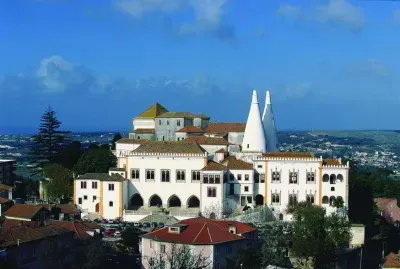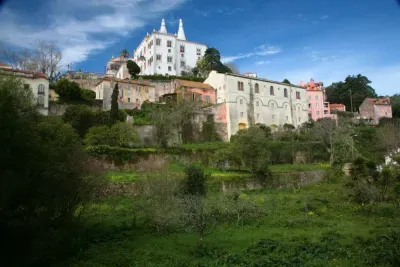
National Palace - Sintra IPPA/Jose Manuel
Sintra National Palace All rights reservedPalácio Nacional de Sintra
The Sintra National Palace sits in the historic town of Sintra, about 10 kilometres north of the Portuguese capital of Lisbon. It is the only royally-owned medieval palace in Portugal which has survived until the present day. This is the place which Portuguese Royals would have called home for more of their history than anywhere else; they resided here from its construction in the early 15th century until the late 19th century.
Originally this was the site of a Moorish palace dating back to the time when North African Muslims dominated the Iberian Peninsula in the 11th century. However in the 1147 reqonquests Afonso Henriques, Portugal's first king, claimed the property for the Portuguese Crown. The palace that stands on the site today was built by King Joao (John) I of Portugal and added to over the centuries by later monarchs.
The site was chosen to be a royal palace thanks to its proximity to the capital of Lisbon, the agricultural quality of the area, and the well-stocked hunting grounds. Some of the older, Moorish-constructed buildings still survive, including the Palatine Chapel. The palace, with its whitewashed façade, is quite a mix of different architectural styles, including Moorish, Manueline, Gothic and Mudejar.
From the outside, the palace’s most defining features are the two huge, white, cone-shaped chimneys that rise 30 metres above the kitchens. Whilst the outside is perhaps not as aesthetically appealing as many of Sintra's quintas and palaces, the inside doesn't disappoint.
The lavish interior of the palace is built around a courtyard. The grandest room is the Swans Hall (Sala dos Cisnes), designed to impress guests, it gets its name from the mosaic-like ceiling, decorated with images of swans. Also Look out for the painted Magpie Room (Sala das Pegas) with its ceiling emblazoned with magpies. These are said to have been commissioned by the queen and represent all the ladies-in-waiting that the philandering king may have taken a shine to. The remainder of the palace was designed to give the occupants increasing privacy and intimacy as they moved away from Swans Hall.
Over the centuries, a few small changes and improvements, such as decorative tiles and doors were added, but at its heart, the palace that stands today is fundamentally unchanged since the Middle Ages. The interior of the palace is richly furnished, and gives visitors a real taste of the luxurious lifestyle enjoyed by the country’s kings and queens prior to the abolition of the Portuguese monarchy.
Address
Largo Rainha Dona AméliaSintra2710-616Phone
+351 21 923 7300Link
https://www.parquesdesintra.pt/en/parks-monuments/national-palace-of-sintra/Attraction type

Sintra travel guide »
Considered not only one of the wonders of Portugal but indeed of Europe, Sintra is truly a gem. Once the royal town of the country, it now deservedly holds UNESCO world heritage status and attracts hordes of visitors throughout the year. Its unusual geography, nestled in a stretch of hills surrounded on all sides by plain, estuary or ocean, and its subsequent climate, which is perhaps more…